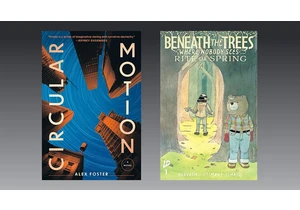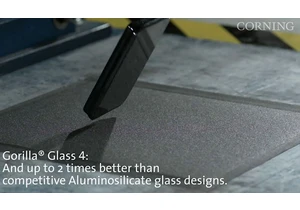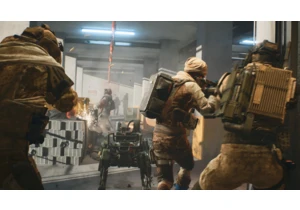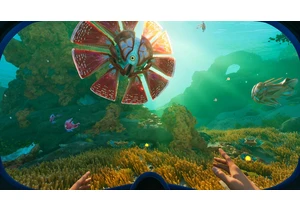After several generations of iterative updates, it feels like Samsung tossed the Galaxy Z Fold 7 into a Hyperbolic Time Chamber to create a stunning device that's leaner, stronger and more powerful than before. The best part though is the phone looks and functions just like a regular handset now that there’s less bulk to lug around. But at a moment's notice, it can go Super Saiyan by opening up to reveal an even larger 8-inch display to become a true multimedia Raidboss. Unfortunately, it's still extremely expensive at $2,000. Though if you can handle the price, in a lot of ways, Samsung has finally achieved foldable phone nirvana with the Galaxy Z Fold 7.
Design: Chef's kiss
When Samsung debuted its updated super sleek design language on the Galaxy S25 Edge, it felt like a novel way to reimagine the S25+ as a more engaging device. But when the company gave the same treatment to the Z Fold 7, that engineering became something truly transformative. Compared to its predecessor, Samsung's big foldable for 2025 is 10 percent lighter at just 215 grams. The bigger drop comes in thickness with Galaxy Z Fold 7 measuring a whopping 26 percent thinner (just 8.9mm when folded). This represents the biggest generation-over-generation decrease for the entire Z Fold line, which is kind of shocking considering it's happening seven years in. The result is a foldable that is basically the same size and weight as the Galaxy S25 Ultra (it's actually a little narrower), which is no mean feat for a class of gadgets that has been plagued by extra heft since they first came out.
What might be just as impressive is that Samsung hasn't really cut corners to deliver the Z Fold 7's streamlined dimensions. You still get an IP48 rating for dust and water resistance (which can handle submersions of up to 5 feet for 30 minutes) along with Gorilla Glass Ceramic 2 in front and Gorilla Glass Victus 2 in back. Samsung also completely re-engineered its Armor FlexHinge, which glides open and closed like a dream. Samsung even says that Z Fold 7's ultra-thin glass is 50 percent thicker than before while also sporting a new titanium lattice that adds additional support and durability to the phone's flexible display.
Inside, Samsung has switched away from the under-display sensor used on previous models in favor of a more traditional hole-punch camera. This is a bit of a shame as it adds a small blemish to that otherwise gorgeous screen. However, with the panel now measuring 8 inches across (up from 7.6 on the Z Fold 6), there's more of it to enjoy even after you account for the small cutout. Plus, the move to a higher-res 10-megapixel sensor for this camera results in significantly better image quality than any of Samsung's under-display modules.
The one small design quirk is that sometimes the phone doesn't unfold all the way, often stopping just short at 179 degrees — much like the original Pixel Fold. That said, you can always make it go fully flat with a bit of extra pressure, though most of the time I don't even bother because this is the kind of thing that you don't really notice unless you're specifically looking for it.
Displays: Now even bigger, both inside and out
As for brightness and image quality, Samsung's panels are still unmatched. In addition to a larger main display, the Z Fold 7's exterior Cover Screen is slightly bigger at 6.5 inches. More importantly, it's noticeably wider too while sporting even thinner bezels, which makes the whole phone feel more usable. The feeling of holding a skinny baton I got on previous models is completely gone. Both screens also support a 120Hz refresh rate and can hit a peak brightness of 2,600 nits. And when compared to rivals like the Pixel 9 Pro Fold, the Fold 7's displays just pop a touch more thanks to slightly richer colors and saturation.
After introducing S Pen integration on the Z Fold 3, Samsung has removed stylus support for this model — a big downgrade that may anger longtime Z Fold fans. The company claims it made this decision after seeing "very low" S Pen usage on previous generations, which frankly isn't all that surprising. But, as one of the highlight features that separated Samsung's big foldables from practically all of its rivals, it's still sad to see it go.
Performance and software: The fastest big foldable phone
The Galaxy Z Fold 7 unquestionably packs top-tier performance. It's powered by a Qualcomm Snapdragon 8 Elite for Galaxy chip along with 12GB or 16GB of RAM and up to 1TB of storage. Everything feels fast and snappy while OneUI 8 and Android 16 bring app optimizations that help make the most of the phone's big display.
The biggest eye-opener for me was when I compared how long it took the Z Fold 7 to launch my current favorite mobile game, Sword of Convallaria, against the Pixel 9 Pro Fold. Even with the increased performance of Google's recent Tensor chips, Samsung's foldable loaded the game in 13 seconds compared to 18 seconds for the Pixel. That might not sound like a ton, but it’s around 25 percent faster and when it's something you do multiple times a day, shaving off even a few seconds adds up fast..
Cameras: A major resolution bump
While the Z Fold 7's ultrawide and 3x telephoto cameras are largely unchanged, the phone features a big photo upgrade thanks to a new 200MP sensor for its main camera. This is essentially the same component Samsung used in the S25 Ultra and S25 Edge, and it delivers a much-needed bump in image quality.
In bright light, the Z Fold 7 easily keeps pace with the Pixel 9 Pro Fold. In certain situations like when snapping pics of food, some may prefer its shots thanks to Samsung's warmer color profile. The phone still tends to oversharpen things, but colors are vibrant. For those who want to maximize resolution, you can select the phone's full 200MP mode (images are captured at 12MP by default). At night, the Fold 7's shots remained surprisingly sharp. I still prefer the Pixel 9 Pro Fold due to its more accurate white balance and often sharper focus, though Samsung's phone isn't far behind.
Potentially the biggest shortcoming on the Fold 7 is that its 3x optical zoom can't quite match the 5x telephoto cam on the Pixel 9 Pro Fold. But for fans of group shots, Samsung added a new selfie camera with a wider 100-degree field of view.
Battery life and charging: Solid longevity, but still only Qi 2 ready
While the Z Fold 7's 4,400mAh battery is the same size as its predecessor, you will get slightly increased longevity due to improved power efficiency from its processor. In our local video rundown test, the Z Fold 7 lasted 20 hours and 50 minutes when using its main 8-inch display and 26 hours and 22 minutes with its exterior screen. Depending on which display you use, that's between 45 minutes and an hour longer than what we got from the previous model, which is nice to see considering battery life was already pretty solid.
Sadly, Samsung hasn't changed much when it comes to recharging. The Z Fold 7 supports wired charging at up to 25 watts — which is rather average for a modern flagship — alongside 15 watt wireless charging. And like the rest of the 2025 premium Galaxy line, this phone is merely Qi 2 ready, which means there's no built-in attachment system for magnetic accessories like charging pucks, card holders and battery packs. So if you want to use peripherals like those, you'll need to get a case with full support for Qi 2.
Wrap-up
I've always said that Samsung is at its best when it focuses on hardware design, and the Galaxy Z Fold 7 may be one of the best examples of that. With its latest flagship foldable, Samsung has removed one of the remaining barriers preventing people from trying out the new breed of phones: excessive size and weight.
By widening its cover display, the Z Fold 7 looks and acts just like a regular smartphone, which is great for checking messages, looking up directions or snapping a photo. When you want to get really immersed in a show, movie or game, you can open up that beautiful flexible display, which is now even larger for your viewing pleasure. The phone’s higher-res main camera also brings upgraded image quality while its Snapdragon 8 Elite chip gives it a performance edge over rivals like the Pixel 9 Pro Fold.
I don't love how Samsung is backtracking on features by removing S Pen support and reverting to an old-school camera cutout instead of an under-display sensor for its main display. But at least in the case of the latter, that change comes with much improved image quality, which is a big upgrade for video calls.
With the Galaxy Z Fold 7, you really do get the best of both worlds. Its new design is just as sleek as comparable traditional flagships while hiding a larger display that makes the need for small tablets obsolete. Unfortunately, with a starting price of $2,000, Samsung hasn't addressed the last roadblock stopping people from trying out a device that might completely change the way they use their phone.
This article originally appeared on Engadget at https://www.engadget.com/mobile/smartphones/samsung-galaxy-z-fold-7-review-foldable-phone-nirvana-for-a-price-123004636.html?src=rss https://www.engadget.com/mobile/smartphones/samsung-galaxy-z-fold-7-review-foldable-phone-nirvana-for-a-price-123004636.html?src=rssInicia sesión para agregar comentarios
Otros mensajes en este grupo.

These are some recently released titles we think are worth adding to your reading list. This week, we're diving into Alex Foster's futuristic debut, Circular Motion, and the return of

OpenAI has achieved "gold medal-level performance" at the International Math Olympiad, notching another important milestone for AI's fast-paced growth. Alexander Wei, a research scientist at OpenAI


Looks like we can skip the drum roll for the next Battl

Welcome to our weekly roundup of the goings on in the indie game space. It's been quite the busy spell, with several notable games debuting or landing on more platforms and some intriguing upcoming

If I had to describe the status of Subnautica 2 in just three words, it would be these: messy, messy, messy. That’s not to say the game itself is in terrible shape — this is actually a piv

